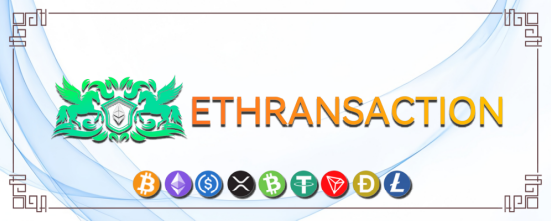Given that India’s on the crossroads of the digital revolution, there’s just one topic that is on everybody’s mind and widely debated but little known: crypto regulation. India’s home to more than 25 million owners of crypto assets, making it one of the world’s leading crypto-adopting countries — but its rulebook is an order-by-the-judgment patchwork, taxation tweak mosaic, and theoretical draftsperson business. In order for us to organize ourselves regarding how our heads should be covered before we figure out where we are going, first of all, we need to organize ourselves regarding whether we’re going.
This story tracks India’s path towards cryptocurrency regulation — from grudging complaints to court proceedings, and from tax-defying warning signals to initial indications of vision-conceiving consultations.
2013–2017: Curiosity to Concern
The Indian government reaction to cryptocurrencies started on a jittery note. India’s Reserve Bank of India (RBI) issued its first advisory notice cautioning the citizens of the dangers of virtual currencies in 2013. The issue? Decentralized networks would misrepresent monetary policy, enable criminal exploitation, and function outside conventional regulatory frameworks.
Through 2014–2017, crypto remained in regulatory limbo — widely traded, yet unrecognized. Major Indian platforms like ZebPay, Unocoin, and Koinex emerged, drawing tens of thousands of retail investors. But the RBI’s warnings remained firm. There was no clarity, only caution.
2018: The Shockwave – RBI’s Circular Bans Banks from Crypto
On 6th April 2018, RBI stunned the world with a surprise: a circular instructing all regulated financial institutions to cut ties with any business or individual that trades in cryptocurrencies. No bank access. No fiat on-ramps.
This move instilled fear among India’s crypto community. The exchanges became redundant. Some shut shop completely or redirected business to Singapore, Dubai, or the Cayman Islands. India’s crypto overnight trades moved to peer-to-peer networks or offshore sites — bifurcated and clandestine.
The move was termed as extravagant and in absence of process by the rival players. A chain of petitions, initiated by IAMAI and cryptocurrency exchanges, reached the Supreme Court.
2020: Judicial Resurgence – The Supreme Court Judgment
India’s Supreme Court struck down the RBI circular of 2018 in a historic decision in March 2020, terming the ban “disproportionate” and empirically unsound. The decision unbundled the liberty of crypto exchanges to access banks and more significantly granted the industry legitimacy.
The ruling sent shock waves in the crypto world. India became business-friendly again. Startups such as WazirX, CoinDCX, and Giottus were placed in overdrive. Retail buying gained momentum. India boasted one of the fastest-growing cohorts of crypto users in the world by December 2020.
2021: The Crypto Boom & The Budget Freeze
The worldwide bull run during the first half of 2021 propelled Bitcoin and Ethereum to record highs — and crypto apps saw Indian youth rushing in. Volumes exceeded $100 million a day on Indian exchanges.
Skepticism once again loomed large. Gossip of blanket ban was rife with reports filtering in of a “Cryptocurrency and Regulation of Official Digital Currency Bill” being introduced in Parliament. There was not even a draft as yet. The finance ministry was sending out mixed signals.
But, as a silver lining, hope had been brought forth with the Parliamentary Standing Committee on Finance, chairperson Jayant Sinha, conducting official consultation with crypto stakeholders. This was the first time entrepreneurs, lawyers, and bureaucrats had sat down at the same table to define the future of Web3 in India.
2022: The Taxation Era – Admission Through Penalty?
The Union Budget 2022 had taken a game-changer — and unpopular — step: a flat 30% tax on crypto profits, and a 1% TDS on every transaction.
Although it accorded de facto status to crypto assets, the action was universally criticized as punitive. Players in the industry noted the absence of distinction between short-term and long-term capital gains, and no allowance for offset or adjustment against loss.
According to a Chainalysis and Indiatech.org report, after imposing taxes, Indian crypto exchange volume fell by more than 70% and more than 500 Web3 builders moved to jurisdictions that were friendlier.
2023: The Year of Soft Diplomacy
Rather than the old-fashioned bullying of the past, in 2023 regulators led the way towards softening:
-
SEBI proposed tokenization pilot schemes and initiated talks with legal professionals.
-
FIU went into consultation with crypto exchanges in order to become PMLA compliant.
-
India’s G20 presidency placed global convergence on digital asset regulation internationally, setting India onto international mainstream platforms such as FATF and IMF guidelines for crypto.
These were reversals from regulation avoidance to policy-making cooperation.
2024: Signs of Official Crypto Legislation
With the election polls looming and Web3 development underway, news of an early 2024 Crypto Regulation Bill surfaced again. Members involved at the policy-making level outlined a step-by-step approach that involved the following:
-
Green papers outlining objectives and principles.
-
Stakeholder feedback forms and virtual town halls as open consultations.
-
90-day exposure draft stage aligned with the India Data Protection Bill process.
Even though still not to be designed on the table before the government, but not even on the drawing board as of now, the government is more than ever eager to enter into formal negotiations with industry.
Short-Term Watch Out
1. Classification of Digital Assets
India would most probably categorize crypto tokens into payment tokens, utility tokens, stablecoins, and security tokens. Classification would take jurisdiction to the RBI, SEBI, or the recently set-up Digital Assets Authority.
2. Licensing Framework
In the wake of Singapore and the EU’s MiCA regime, an exchange, custodian, and wallet provider licensing regime is in the works — with a balance between innovation and compliance.
3. Sandboxing for Startups
There may be a blockchain sandbox for innovation either within MeitY or NITI Aayog. Startups would be able to test products without needing to contend with regulatory overhang in the first instance.
4. Redesigned Taxation Norms
With pressure from the industry building, saner crypto taxation is on the horizon — with scope for long-term holding gains relief, lower TDS, and set-off of losses.
Conclusion: From Reactive to Visionary
India’s path towards regulating cryptos is a miniaturization of how new technologies reshape older models of governance. What was once knee-jerk reactions is now slowly becoming a wiser, consultative one.
The future is in the balance: protecting citizens without inhibiting innovation, facilitating openness of reach without limiting creativity.
India can choose to map the destiny of the Web3 era — not by following the West, but by defining its own people-centric, tech-savvy, inclusive crypto policy.







